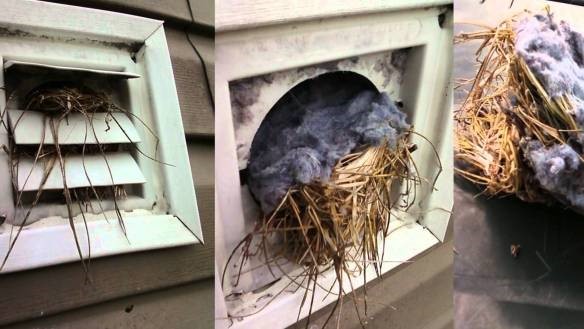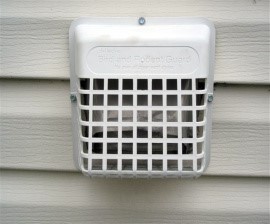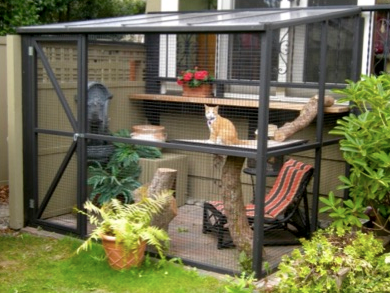Guest Blog by Emma Glinny.
Our houses are our homes, where we can go to feel safe, but they can pose often unknown risks to our feathered roommates – the backyard birds! Here are a few of the things about our houses that can be dangerous for birds and the ways that you can help protect them.
Dryer vents and other open pipes
Our vents are probably not something that we think about very often, but to a bird looking to build a nest, they can be a very enticing spot to do so. Not only does this increase the risk of a bird getting stuck in there, but it also creates a huge fire risk.
Luckily, the solution to these problems is simple – cover it up! For your dryer vent, you can purchase dryer vent screens, such as below. For any other open pipes, cover it up appropriately depending on its purpose. Just remember before you cover up any openings, check to make sure that there aren't any creatures in there!
(Source: Spinner Vent, and humansociety.org)
Windows
(Source: windowalert.com)
As a kid I remember cutting bird shapes out of construction paper to stick on our windows to prevent birds from flying into them. Today, you can purchase window decals from the store that are barely even noticeable! These decals reflect ultra-violet light, so they are see-through to us, but to birds they are highly visible. Of course, you can still always make your own out of paper, but it is nice to have options.
Also, if you like to have bird feeders or baths in your backyard, you can do our feathered friends a favour by placing these within one metre or more than ten metres away from windows.
(Source: windowalert.com)
Cats
Not necessarily part of our houses, but they are in our houses! Unfortunately, our furry friends don't often get along with our feathered neighbours in the backyard. Cats are the number one killers of songbirds in Canada, but it doesn't have to be this way!
A simple solution is to keep your cats indoors. Indoor cats live longer, are less likely to get infections, and ticks, and are less likely to get hit by cars or become prey for a hungry coyote. If you think your cat may become bored staying inside, you can provide more stimulation through toys, hiding places (such as a cat condo), scratching posts, and more.
(An example of an outdoor enclosure, or "catio".) (Source: catsandbirds.ca)
If you don't want to keep your cat exclusively indoors, there are other measures you can take. When letting your cats outside you can choose to keep them on a leash or to keep them within an outdoor enclosure.
If that's still not enough freedom for your roaming feline, you can purchase products such as a CatBib or Birdsbesafe collar which, while they are not 100% effective, work to drastically reduce your cat's ability to kill birds.
To learn more about how you can help keep birds safe as a cat owner or to take Nature Canada's pledge to prevent your cat from roaming freely outdoors, visit catsandbirds.ca.
At the end of the day, if we can all do our part in keeping birds safe, it is a win for our homes, our pets, and of course those beautiful birds!
Chipping Sparrow. (Source: Lu Carbyn, EALT)







